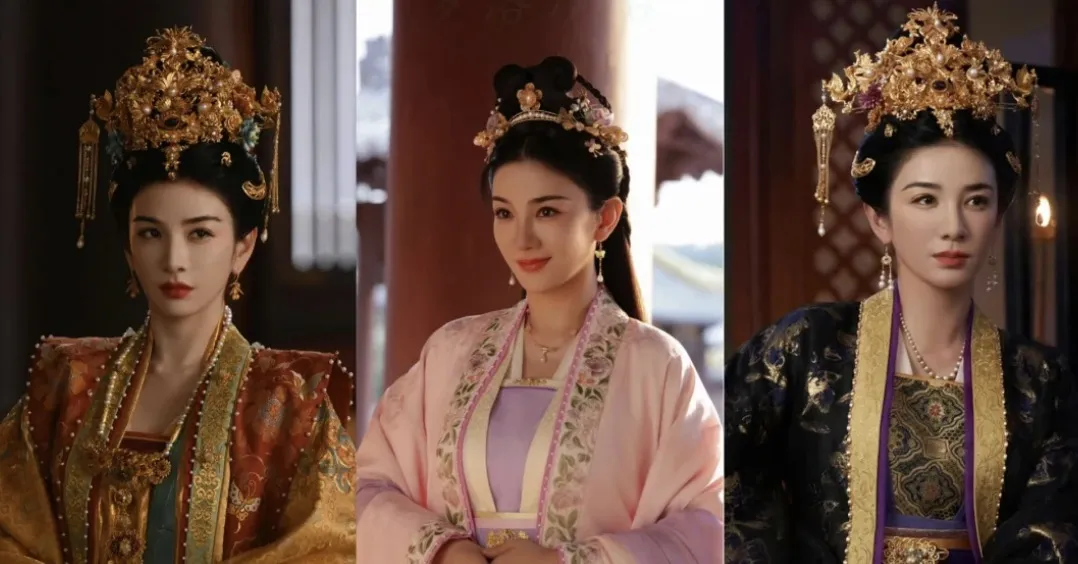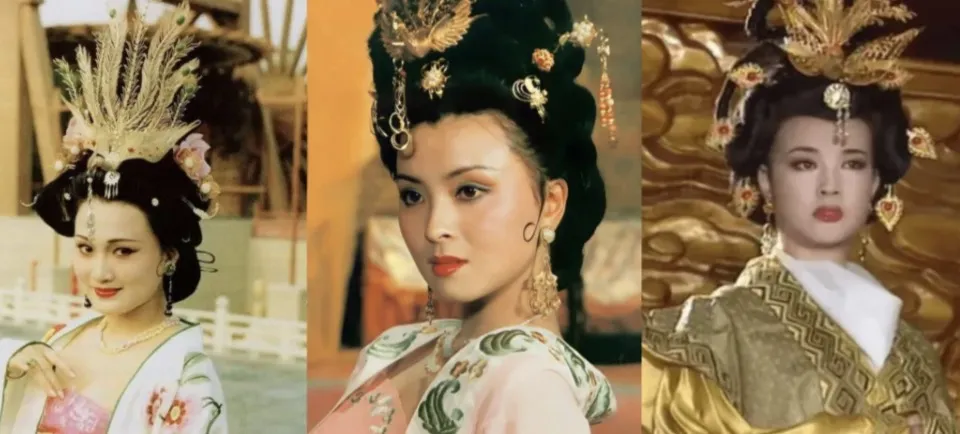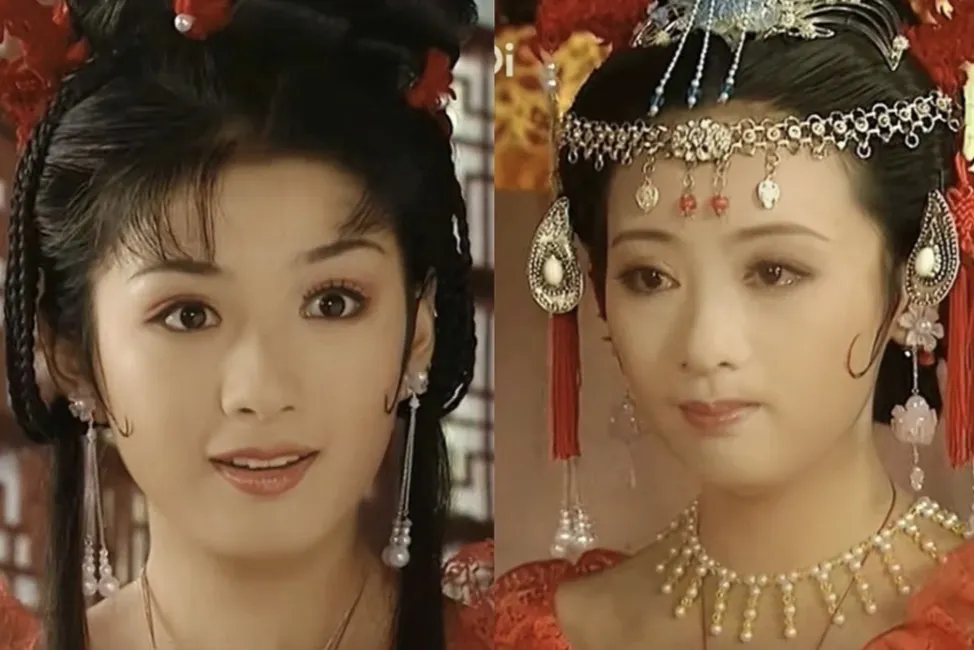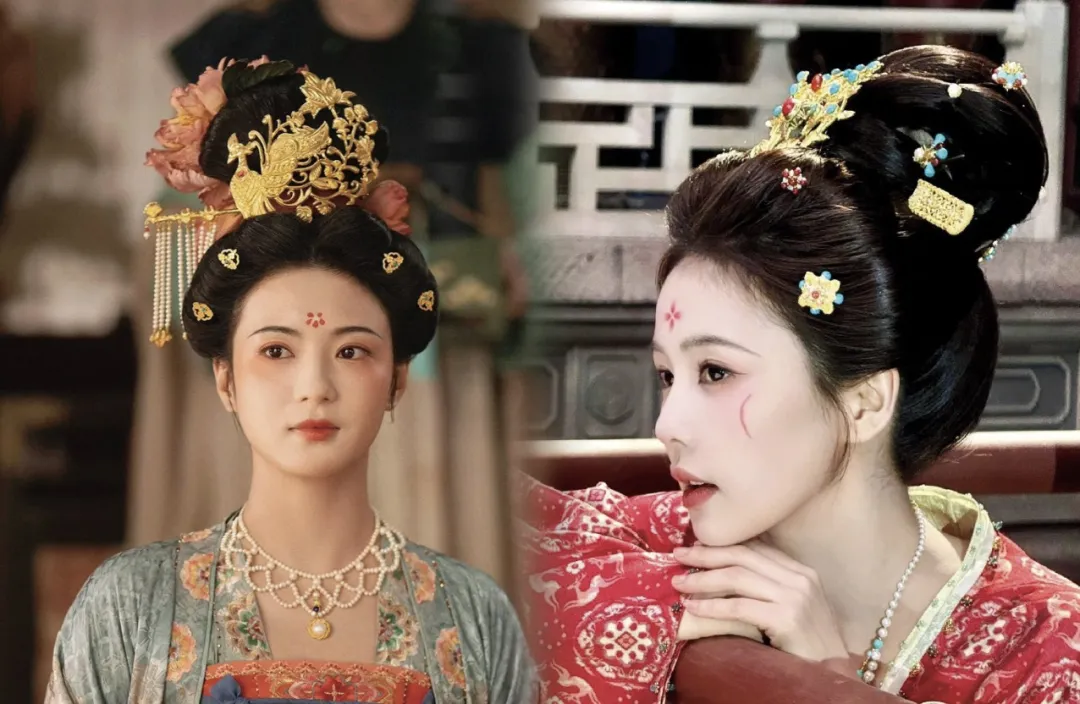Who understands! There was a kind of resplendent beauty in old TV dramas. When I was a child watching period dramas, I was always amazed by the large phoenix hairpins and the dazzling golden ornaments on the characters' heads. It fulfilled the imagination of grandeur and nobility. Why is this style less common in modern dramas? Let's start with the conclusion. This style of wearing numerous hairpins was particularly representative of the late Tang Dynasty, with its origins traceable back to the Southern and Northern Dynasties. The late Tang period witnessed unprecedented extravagance in women's hairstyles and attire, often described as 'explosively stylish.' Literary descriptions further deepened our imagination of ancient women's hair ornaments. For example, Emperor Xiao Yan of the Southern and Northern Dynasties wrote in 'Song of the River,' 'Twelve rows of golden hairpins on the head, five - patterned silk shoes on the feet.' Tang poet Shi Jianwu also noted in 'Makeup Removal Poem,' 'Under the lamp, I gaze again at the bronze mirror, vainly inserting twelve rows of golden hairpins.'
The popularity of such intricate hair ornaments was due to the Tang trend of high buns. The larger the hairstyle, the more hairpins were used. Thus, female figurines from this period are often called 'Tang big - headed dolls.' The height of the bun also signified a higher social status, a trend that reached its peak in the late Tang and Five Dynasties periods. More wigs meant more hairpins, mostly arranged symmetrically in pairs. The more golden hairpins one wore, the more luxurious they appeared. If a noblewoman wore 'Chai Dian ceremonial attire,' she had to follow the corresponding rules for the number and arrangement of hairpins.
How to Wear 'Twelve - Dian Chai'
So, how was the 'Twelve - Dian Chai' worn? Many donor portraits in Dunhuang murals depict this intricate style. For instance, the portrait of the Liang State Lady in Cave 19 of the Yulin Grottoes shows eight (four pairs) golden hairpins and several precious Dian ornaments. Donor portraits of the Cao family in Dunhuang feature six or four hairpins, mostly arranged symmetrically on both sides, never exceeding the vertical line of the head. The terms 'Zan' and 'Chai' had different meanings early on: Zan typically referred to single - pronged hairpins, while Chai were double - pronged. Later, Zan became a general term for women's hair ornaments.
Old period dramas, not limited to the Tang Dynasty, even the dignified Ming style, could evoke a sense of 'heavenly nobility.' Although historical references were scarcer and less accessible then, the 'charm' and 'aesthetics' were sufficient. Even cheap materials could convey the grandeur of a golden age. The difference in aesthetics lies in whether the abundance of hairpins appears gaudy or noble—a distinction easily discernible at a glance.
Actors and Hairstyles
In the past, actors would deliberately gain weight for Tang Dynasty roles to achieve a plump and majestic look. Nowadays, only veteran actors can pull off such a style. For example, in 'The Glory of Youth,' Huang Yi’s slender face was compensated by her long - accumulated grace and poise, balancing the visual disparity caused by large hair ornaments. This also recalls her role in 'Wrong Carriage, Right Groom,' where her younger self portrayed Li Yuhu with simpler, more playful hair ornaments, contrasting sharply with Du Bingyan’s noble and elegant style. However, such minimalist styling was reserved for martial or commoner roles, not court or aristocratic families.
Modern period dramas, influenced by the contemporary 'pale, young, and thin' aesthetic, often feature actors who are too slender and lack trained poise, making it hard for them to carry large hairstyles, let alone intricate ornaments. Today’s styles are simplified versions of the past. While details like costumes, hairpins, and image quality have improved, the impression left by the hair ornaments of old dramas remains more vivid. That said, modern productions have made progress in balancing classical and contemporary aesthetics. What do you think?




